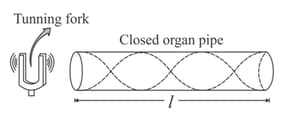B M Sharma Solutions for Chapter: Sound Waves and Doppler Effect, Exercise 2: CONCEPT APPLICATION EXERCISE
B M Sharma Physics Solutions for Exercise - B M Sharma Solutions for Chapter: Sound Waves and Doppler Effect, Exercise 2: CONCEPT APPLICATION EXERCISE
Attempt the free practice questions on Chapter 8: Sound Waves and Doppler Effect, Exercise 2: CONCEPT APPLICATION EXERCISE with hints and solutions to strengthen your understanding. PHYSICS FOR JOINT ENTRANCE EXAMINATION WAVES AND THERMODYNAMICS solutions are prepared by Experienced Embibe Experts.
Questions from B M Sharma Solutions for Chapter: Sound Waves and Doppler Effect, Exercise 2: CONCEPT APPLICATION EXERCISE with Hints & Solutions
The excess pressure in a travelling sound wave is given by , where and , are in meters and is in seconds and is in pascals.
What is the maximum increase in pressure (pressure amplitude)?
The excess pressure in a travelling sound wave is given by , where and , are in meters and is in seconds and is in pascals.
If the equilibrium pressure of air is , What is the pressure at and
The excess pressure in a travelling sound wave in air is given by
Find the frequency, wavelength and the speed of sound wave in air.
The excess pressure in a travelling sound wave in air is given by
If the equilibrium pressure of air is what are the maximum and minimum pressures at a point as the wave passes through that point?
By how much must the temperature of air near be changed to cause the speed in it to change by
Determine the percentage change in the speed of sound in air when the temperature changes from to .
Speed of sound in hydrogen at is . When some amount of oxygen is mixed with hydrogen, the speed decreases to . Determine the ratio of hydrogen and oxygen by volume in the mixture. Given density of oxygen is times that of hydrogen.
A tuning fork force generates a sound of frequency and resonates with the air column closed at one end by a tube of length . If air column vibrates with its fundamental mode at temperature , assuming of air, find its molar mass.

